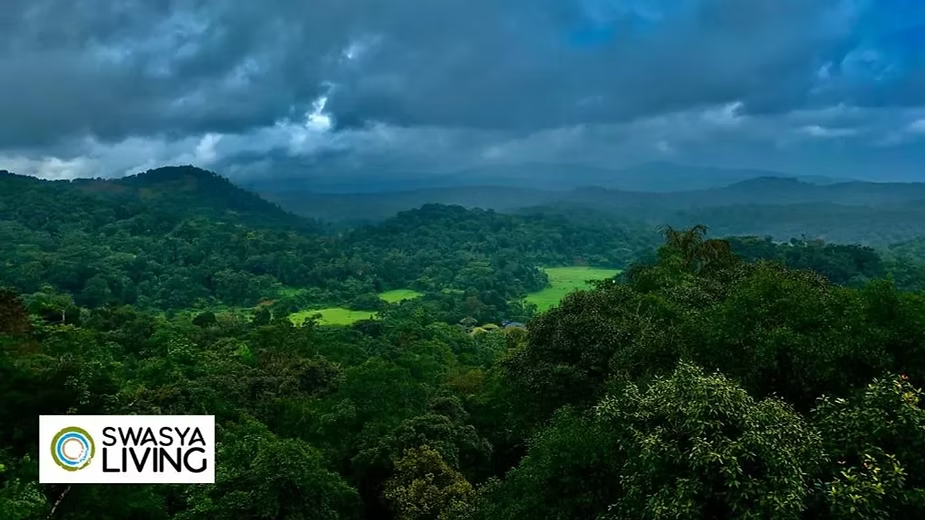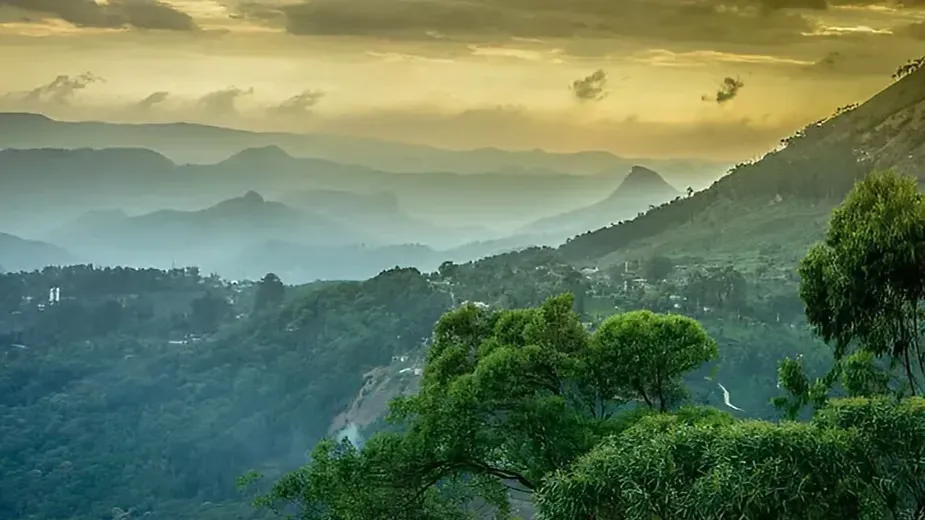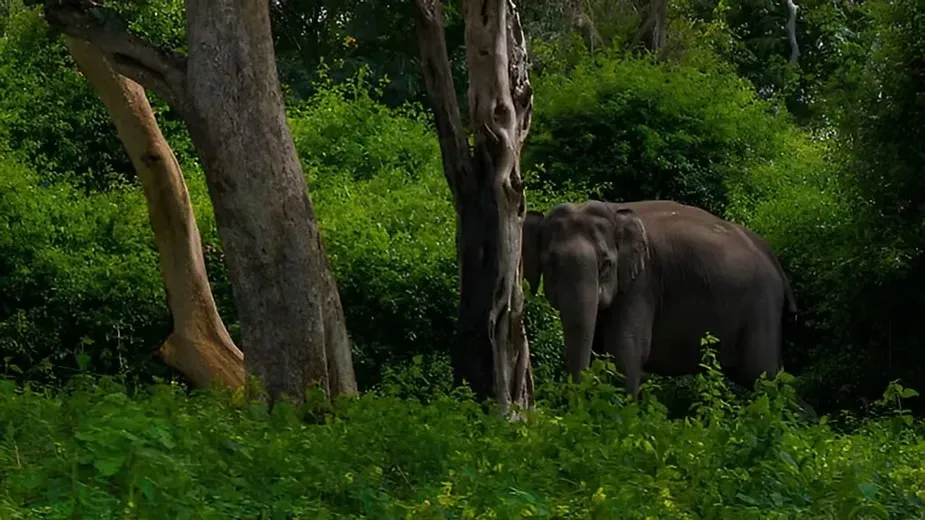Types of Forest in Karnataka: Key Types, Importance, and Conservation Efforts
Published on July 28, 2025

Forests are vital resources that play a crucial role in human life by providing essential products like timber, fuel, medicinal plants, and wildlife habitats. Beyond these, they offer critical environmental services such as preventing soil erosion, regulating water flow, absorbing carbon, and supporting nutrient cycles. Forests are also home to a wide variety of species, helping maintain biodiversity and ecosystem health.
Tropical forests, in particular, are extremely valuable due to their rich biodiversity and the numerous benefits they provide. Recently, the idea of assessing the "total economic value" of forests has gained traction, especially in conservation efforts (Lele et al., 2000).
In India, 43% of its total 329 million hectares of land is used for farming, while 23% is covered by forests (Ministry of Environment and Forests, 1999). According to the Forest Survey of India (2011), India’s forest cover stands at 692,027 km², which is about 21.05% of the country’s total area. Indian forests are divided into four main groups—tropical, sub-tropical, temperate, and alpine—following the classification by Champion and Seth (1968).
These are further categorized into 16 types, such as tropical wet evergreen, semi-evergreen, and deciduous forests, with tropical dry deciduous forests being the most common across India.
Western Ghats: A Biodiversity Hotspot

The Western Ghats, a range of hills running parallel to the Arabian Sea, stretches approximately 1,600 km from Gujarat to Kanyakumari. Covering around 160,000 km², this region is recognized as one of the 34 global biodiversity hotspots, characterized by high levels of plant endemism and severe habitat degradation. The complex geography, annual rainfall variations (1,000-6,000 mm), and altitude-related temperature changes create a diversity of vegetation in the Western Ghats.
The western slopes, experiencing high rainfall, are home to tropical evergreen forests, while the eastern slopes, lying in the rain-shadow region, feature semi-evergreen to dry deciduous forests. Shola forests and grasslands can be found at altitudes exceeding 1,500 meters, mainly in the Nilgiris and Anamalais. Unfortunately, much of the natural vegetation has degraded due to human activities like shifting cultivation (Pascal, 1986, 1988).
Flora and Fauna of the Western Ghats
The Western Ghats support a wide variety of flora and fauna. Over 4,000 species of flowering plants, 330 species of butterflies, 156 species of reptiles, 508 species of birds, 120 species of mammals, 135 species of amphibians, and 289 species of fish have been recorded, many of which are endemic to the region (Daniels, 2003; Gururaja, 2004; Sreekantha et al., 2007).
8 Types of Forest in Karnataka - Western Ghats
The Western Ghats, a mountain range running parallel to the western coast of India, is renowned for its rich biodiversity and varied vegetation types. This range, stretching from Gujarat to Kanyakumari, covers an area of approximately 160,000 square kilometres.
The region’s complex geography and climatic conditions contribute to its diverse vegetation, which can be broadly categorized into several key types:
1. Tropical Wet Evergreen Forests
These forests, found in regions with over 200 cm of annual rainfall, represent climax vegetation. They feature dense, multi-layered canopies with towering trees, shrubs, and understory plants. This structure supports high biodiversity, with a rich variety of plant and animal species. The dense foliage and high humidity create a unique microclimate, essential for maintaining ecological balance and regulating the local climate
- Flora: Dominant species include Dipterocarpus indicus, Ficus nervosa, and Palaquium ellipticum. The canopy is formed by emergent trees like Syzygium gardenerii and Holigarna grahamii, with a rich undergrowth of smaller trees and shrubs such as Aglaia anamallayana and Diospyros saldhnae.
- Location: Primarily found on the western slopes of the Western Ghats where rainfall is abundant.
2. Semi-Evergreen Forests
These forests, found in regions with moderate to high rainfall ranging from 150-200 cm annually, are known for their transitional nature. They often bridge the gap between evergreen and deciduous forests, displaying characteristics of both types. Typically emerging in areas with significant rainfall, these forests can also develop as a result of disturbances in evergreen forests, such as logging or natural events.
They are notable for their diverse plant life and rich undergrowth, which supports a variety of wildlife. The unique blend of species and structural diversity in these forests helps maintain ecological balance and contributes to the overall health of the forest landscape.
- Flora: Species include Lagerstroemia microcarpa, Terminalia spp., and Stereospermum personatum. Semi-evergreen forests retain many evergreen species but also feature deciduous trees like Tetrameles nudiflora.
- Location: Found in both the high-rainfall western areas and areas subjected to human disturbance.
3. Moist Deciduous Forests
Characterized by their seasonal leaf shedding, these forests fall under the types of forest in Karnataka and are typically found in areas receiving 100-150 cm of annual rainfall. Known as tropical dry deciduous forests, they are well-adapted to the dry season, shedding leaves to conserve water. These forests often emerge in regions with reduced rainfall or areas that have experienced disturbances, such as deforestation, in higher rainfall zones. They play a key role in the ecosystem by maintaining soil fertility and providing habitat for various wildlife species, despite the seasonal changes.
- Flora: Common species include Adina cordifolia, Careya arborea, and Dillenia pentagyna. Teak (Tectona grandis) and bamboos like Bambusa arundinacea are also prominent, particularly in plantations.
- Location: Occur in the rain-shadow regions of the Western Ghats, particularly in the eastern parts of Uttara Kannada, Haliyal, and western Mundgod.
4. Dry Deciduous Forests
These forests, categorized under the types of forest in Karnataka, thrive in regions receiving less than 100 cm of annual rainfall. Adapted to dry conditions, they often exhibit a noticeable reduction in tree density and canopy cover. Such forests are typically composed of drought-resistant species that can withstand prolonged dry periods, contributing to the unique ecology of Karnataka's landscape. These forests also play a crucial role in preventing soil erosion and supporting local wildlife, despite the harsher waterconditions.
- Flora: Dominant species include Albizzia spp., Anogeissus spp., and Bombax ceiba. Teak trees here are generally smaller, and these forests are sometimes referred to as ‘teak pole’ forests.
- Location: Found in the drier, eastern parts of the Western Ghats, including parts of Mundgod and eastern Haliyal.
5. Shola Forests
Shola forests, unique to high-altitude regions above 1500 meters, are a fascinating blend of stunted evergreen trees nestled within a mosaic of rolling grasslands. These forests thrive in cooler temperatures, benefiting from frequent cloud cover and mist, which provides moisture even in drier seasons. The dense canopy of the Shola forest offers shelter to a wide array of plant and animal species, many of which are endemic to the Western Ghats. This ecosystem plays a key role in water retention and acts as a natural water source for surrounding areas, making it vital for both biodiversity and regional hydrology.
- Flora: Includes species such as Syzygium travancoricum and Myristica magnifica. The forest structure is typically more open compared to lower altitude forests, with significant interspersed grasslands.
- Location: Found primarily in the Nilgiris and the Anamalai Hills.
6. Shola Grasslands and Grassy Blanks
These high-altitude grasslands, often found on the exposed slopes and peaks of the Western Ghats, are interspersed with patches of Shola forest. The unique combination of grasslands and Shola forest creates a distinctive ecosystem vital for biodiversity, particularly in regions like Karnataka. Among the types of forest in Karnataka, Shola forests are known for their dense, evergreen nature, thriving in the valleys and depressions of these grasslands. Together, these landscapes play a crucial role in regulating water flow, preventing soil erosion, and providing a habitat for a variety of endemic species.
- Flora: Grasslands feature species adapted to high altitude and exposed conditions, while Shola forests contain a mix of evergreen and grassland species.
- Location: Predominantly in the Nilgiris and Anamalais, transitioning from Shola forests to open grasslands.
7. Savannas
Savannas, created largely by human activities, consist of vast grasslands dotted with scattered trees. These ecosystems often arise as a consequence of deforestation, agricultural expansion, or other forms of land-use change, where dense forests are cleared and replaced by open grasslands. Over time, the natural forest structure is lost, giving way to a landscape that can support only drought-tolerant species and sparse vegetation. While savannas can still support biodiversity, they lack the ecological richness of the original forests and are more prone to soil degradation and reduced water retention. This transformation underscores the long-term impacts of human interference on natural ecosystems.
- Flora: Composed of grass species and distantly spaced trees such as Terminalia chebula and Zanthoxylum rhetsa.
- Location: Found in regions previously covered by forests but altered through agricultural or other human activities.
8. Scrubs and Thickets
These are highly disturbed areas characterized by shrubby vegetation and stunted trees, often a result of intense human impact and land degradation. Such regions fall under degraded forests, a common outcome when ecosystems are pushed beyond their limits. Among the types of forest in Karnataka, these areas may originally have been tropical deciduous or evergreen forests before human activities altered them. Efforts to restore and conserve these degraded lands are crucial for reestablishing biodiversity and ecological balance.
- Flora: Includes thorny and spinous shrubs like Capparis spinosa and Zizyphus rugosa, as well as shrubby plants such as Embelia tsjeriam-cottam and Grewia microcos.
- Location: Scattered throughout the district, especially in areas of severe disturbance.
Forests of Uttara Kannada: An Overview

Geographic and Climatic Profile
Uttara Kannada, the northernmost district along Karnataka's coast, spans a total area of 10,291 square kilometers. The district's topography is divided into three zones:
- A narrow coastal strip running along Karwar, Ankola, Kumta, Honavar, and Bhatkal taluks.
- The steeply rising Western Ghats towards the interior of these taluks.
- The eastern interior, comprising Sirsi, Siddpur, Supa, Yellapur, Haliyal, and Mudgod taluks, merging into the Deccan Plateau.
Forest Survey of India (2011) revealed that 76% of the district's area is forested. Historically, many of these forests have undergone degradation due to practices like slash-and-burn agriculture, and many forests are now in stages of secondary succession (Chandran, 1997).
Early botanical studies of this region by Santapau (1955) and Champion and Seth (1968) classified these forests as West Coast evergreen and semi-evergreen. Further studies by Pascal (1982, 1984) and Chandran (1995) confirmed the district's rich biodiversity and the impact of human activities on its forests.
Kans: Sacred Groves
A unique feature of Uttara Kannada is the presence of ‘kans’—sacred groves traditionally protected by local communities. These groves, spanning a few to several hundred hectares, play a vital role in maintaining the district's biodiversity. The kans are of high economic and ecological importance, often serving as sources of valuable spices and perennial streams.
They also harbor rare and endemic species like Dipterocarpus indicus and Semecarpus kathalekanensis. Among the various types of forest in Karnataka, the kans represent a unique ecological zone within the tropical evergreen and moist deciduous forests, contributing significantly to the region's biodiversity and environmental stability.
Major Forest Types in Uttara Kannada
- Evergreen Forests: These forests, primarily found in high-rainfall areas, contain species like Dipterocarpus indicus, Ficus nervosa, and Syzygium gardenerii. Myristica swamps and canes are commonly found in ancient patches of these climax forests.
- Semi-evergreen Forests: These forests are typically located in areas subject to human pressures. They share species with evergreen forests but include deciduous trees like Lagerstroemia microcarpa and Terminalia spp.
- Moist Deciduous Forests: Found in the rainshadow region, these forests contain species like Lagerstroemia lanceolata and Tectona grandis.
Importance of Forests in the Western Ghats and Uttara Kannada
The forests of Uttara Kannada are vital for maintaining the region’s hydrology, controlling soil erosion, and supporting diverse wildlife. These forests, part of the Western Ghats, play a key role in regulating water flow, preventing floods, and preserving soil fertility, which benefits local agriculture. As home to numerous species, including endemic ones, they are crucial for biodiversity conservation.
With ongoing human activities like deforestation and urbanization, it’s essential to monitor and conserve these forests to ensure sustainability. In Karnataka, the types of forests include tropical evergreen, semi-evergreen, moist deciduous, and dry deciduous. The tropical evergreen and moist deciduous forests in Uttara Kannada are especially important for preserving the unique biodiversity of the region, making their conservation a priority.
Conclusion
Forests, particularly in the Western Ghats and Uttara Kannada, are invaluable for their ecological and economic contributions. They provide essential resources, such as timber, fuel, and medicinal plants, while also offering crucial environmental services like soil conservation, water regulation, and carbon sequestration.
The rich biodiversity of these regions, including unique forest types like tropical evergreen and Shola forests, underscores their importance. Sacred groves, such as the kans in Uttara Kannada, highlight the intersection of cultural and ecological value. As human activities threaten these ecosystems, ongoing conservation efforts are vital to ensure their sustainability and preserve their multifaceted benefits for future generations.
